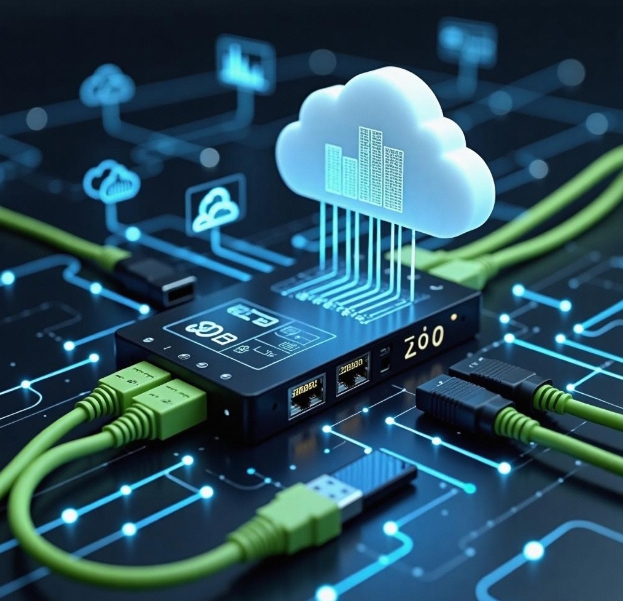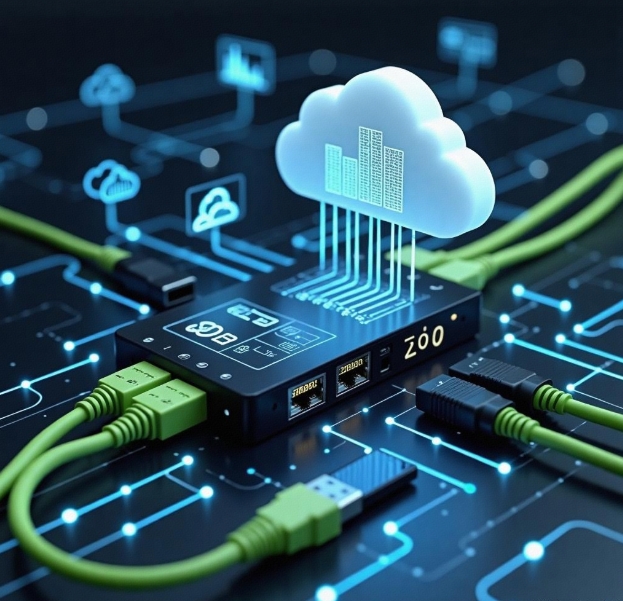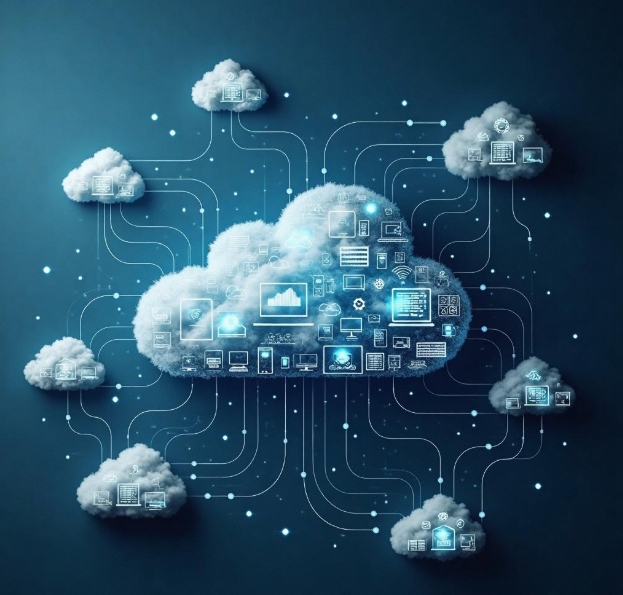Applications and Challenges of Cloud Computing in the Internet of Things (IoT)
- latest articles
- 1.DApp Development & Customization: Merging Diverse Market Needs with User Experience 2.Analysis of the Core Technical System in DApp Project Development 3.How to achieve cross-chain interoperability in Web3 projects? 4.How does the tokenization of points reconstruct the e-commerce ecosystem? 5.How to Set and Track Data Metrics for a Points Mall? 6.What is DApp Development? Core Concepts and Technical Analysis 7.Inventory of commonly used Web3 development tools and usage tips 8.Development of a Distribution System Integrated with Social E-commerce 9.Six Key Steps for Businesses to Build a Points Mall System 10.What is DApp Development? A Comprehensive Guide from Concept to Implementation
- Popular Articles
- 1.Future Trends and Technology Predictions for APP Development in 2025 2.Analysis of the DeFi Ecosystem: How Developers Can Participate in Decentralized Finance Innovation 3.From Zero to One: How PI Mall Revolutionizes the Traditional E-commerce Model 4.DAPP Development | Best Practices for Professional Customization and Rapid Launch 5.Recommended by the Web3 developer community: the most noteworthy forums and resources 6.From Cloud Computing to Computing Power Leasing: Building a Flexible and Scalable Computing Resource Platform 7.How to Develop a Successful Douyin Mini Program: Technical Architecture and Best Practices 8.Shared Bike System APP: The Convenient Choice in the Era of Smart Travel 9.How to Create a Successful Dating App: From Needs Analysis to User Experience Design 10.From Design to Development: The Complete Process of Bringing an APP Idea to Life
With the continuous development of information technology, cloud computing and the Internet of Things (IoT) have become two major pillars of modern technology. Cloud computing significantly enhances the efficiency of data processing and storage by providing powerful computing and storage capabilities; while IoT connects various devices and sensors, enabling a closer integration of the physical and virtual worlds. The combination of cloud computing and IoT not only brings convenience to individuals and businesses but also drives the intelligent transformation of various industries.
However, although cloud computing provides strong support for the widespread application of IoT, their integration also faces numerous challenges in practical applications. This article will explore the application of cloud computing in IoT, analyze the main challenges it faces, and propose possible solutions.
1. Basic Concepts of Cloud Computing and IoT
1.1 Definition and Characteristics of Cloud Computing
Cloud computing refers to a computing method that provides computing, storage, network, and other computing resources to users via the internet. Users do not need to own or manage hardware devices but can obtain computing power on-demand through the network. The main characteristics of cloud computing include:
On-demand service: Users can select services based on actual needs without making large upfront investments in hardware and infrastructure.
Elastic scalability: Cloud computing can dynamically adjust resource allocation according to changes in user demand.
High availability: Cloud computing platforms typically have strong fault tolerance capabilities, ensuring continuous service availability.
Centralized management: Cloud computing platforms improve resource utilization efficiency and maintenance convenience through centralized management.
1.2 Definition and Characteristics of IoT
The Internet of Things (IoT) refers to the connection of various physical devices, sensors, and objects via the internet, enabling them to exchange information and perform intelligent processing. The main characteristics of IoT include:
Ubiquitous connectivity: Devices in IoT are connected through networks, enabling real-time data sharing.
Intelligent sensing: IoT devices can perceive environmental changes and perform data collection and analysis.
Automated operation: IoT can automatically control device operations based on preset rules, reducing human intervention.
Massive data: IoT devices can generate large amounts of data, requiring powerful data processing capabilities for analysis and utilization.
2. Applications of Cloud Computing in IoT
The high scalability and powerful computing capabilities of cloud computing make it an ideal platform for IoT applications. The following are several typical application scenarios of cloud computing in IoT:
2.1 Data Storage and Management
IoT devices typically generate large amounts of data that need to be stored, managed, and analyzed. Due to the widespread distribution of IoT devices and the massive volume of data, traditional local storage methods cannot meet the demand. Cloud computing platforms provide elastic storage capabilities, effectively addressing this issue. Through cloud storage, data generated by IoT devices can be securely stored in the cloud and accessed at any time.
Additionally, cloud computing can provide powerful data management functions. Cloud platforms can classify, organize, and retrieve massive data, facilitating subsequent analysis and use.
2.2 Data Processing and Analysis
The data generated by IoT is not only vast in quantity but also diverse in type. To extract valuable information from it, data processing and analysis are essential. Cloud computing platforms can provide powerful computing capabilities and analytical tools, helping enterprises quickly process and analyze data from different devices.
Through cloud computing, IoT data can be transmitted to the cloud in real-time for processing and analysis. For example, through big data analysis, enterprises can monitor device operating status in real-time, predict device failures, and optimize resource allocation. Additionally, cloud platforms can integrate machine learning and artificial intelligence technologies to achieve automated data analysis and intelligent decision-making.
2.3 Device Management and Control
Cloud computing can not only store and process IoT data but also centrally manage IoT devices through cloud platforms. Via cloud platforms, users can remotely monitor device status, configure device parameters, update device firmware, etc.
Cloud computing platforms typically provide unified interfaces that support the management of various types of devices. Enterprises can use these interfaces to achieve batch device management, simplifying device maintenance tasks. Furthermore, the high availability and elasticity of cloud platforms ensure that IoT devices maintain good operating conditions.
2.4 Security and Privacy Protection
IoT devices often involve large amounts of sensitive data, such as personal health information and traffic data. The security mechanisms provided by cloud computing can effectively protect the security and privacy of this data. Through encryption technology, identity authentication, access control, and other measures, cloud computing can prevent data leakage and unauthorized access.
Additionally, cloud platforms typically adopt distributed architectures, with data storage and processing distributed across multiple data centers, which can enhance system fault tolerance and resistance to attacks, further improving the security of IoT systems.
3. Challenges of Cloud Computing in IoT
Although cloud computing has widespread applications in IoT, there are still some challenges in practical deployment. The following are the main challenges of cloud computing in IoT:
3.1 Network Bandwidth and Latency Issues
IoT devices typically require real-time data transmission, while cloud computing's processing and storage are usually centralized in data centers. If network bandwidth is insufficient or latency is too high, it may cause delays in data transmission, thereby affecting the real-time performance of IoT systems. For example, in intelligent transportation systems, real-time traffic data needs to be transmitted and processed quickly to make immediate decisions. If network delays or insufficient bandwidth occur, it may lead to sluggish system responses, affecting traffic management effectiveness.
3.2 Data Privacy and Security Issues
The data generated by IoT devices contains a large amount of sensitive information, such as personal health status and geographic location. Storing and processing this data in the cloud may pose risks to data privacy and security. Security incidents such as hacker attacks and data leaks can cause serious harm to users.
Although cloud computing platforms provide various security protection measures, in IoT, the data transmission path is complex, involving multiple devices and platforms, which increases the difficulty of data security management.
3.3 Interoperability Issues of Devices and Platforms
There is a wide variety of IoT devices, and devices from different manufacturers may use different protocols and standards. This leads to interoperability issues between devices. To achieve seamless connection between cloud platforms and IoT devices, these interoperability issues must be overcome.
Currently, although some standards and protocols (such as MQTT, CoAP, etc.) have been proposed, there are still situations where some devices and platforms are incompatible. This requires joint efforts from all parties to promote the standardization of IoT devices and platforms.
3.4 Allocation and Management of Computing Resources
Although cloud computing platforms provide abundant computing resources, how to reasonably allocate and manage these resources according to the needs of IoT systems remains a challenge. The large number of IoT devices and the variety of data generated make it a critical issue for cloud computing in IoT to dynamically adjust the computing resources of the cloud platform to meet the needs of different devices and applications.
3.5 Collaboration Between Edge Computing and Cloud Computing
Edge computing is a computing model that moves data processing and storage to the edge of the network, reducing latency and saving bandwidth. However, IoT devices have limited computing capabilities and cannot perform complex processing tasks. Therefore, the collaboration between edge computing and cloud computing has become an inevitable trend. How to efficiently combine edge computing with cloud computing and balance their advantages and disadvantages is an important challenge in current IoT applications.
4. Solutions and Development Trends
4.1 Strengthening Network Infrastructure Construction
To overcome network bandwidth and latency issues, network infrastructure construction can be strengthened to increase bandwidth and reduce latency. For example, the promotion of 5G networks provides faster communication speeds and lower latency for IoT, meeting its high requirements for real-time performance.
4.2 Enhancing Data Encryption and Privacy Protection Technologies
To ensure the security of IoT data, stronger encryption technologies and privacy protection measures can be adopted, such as end-to-end encryption and multi-factor authentication. Additionally, using technologies like blockchain can also improve data security and transparency.
4.3 Promoting IoT Standardization
To improve the interoperability of IoT devices and platforms, relevant institutions and enterprises should actively promote IoT standardization efforts. Through unified protocols and interfaces, ensure that devices from different manufacturers can interconnect on the same cloud platform.
4.4 Achieving Collaboration Between Edge Computing and Cloud Computing
The collaboration between edge computing and cloud computing can effectively reduce latency and improve system response speed. By offloading data processing tasks with high real-time requirements to edge devices and leaving non-real-time tasks to the cloud platform, resource usage can be optimized, and overall system efficiency can be improved.
Conclusion
The combination of cloud computing and IoT has driven the development of fields such as smart homes, smart cities, and Industry 4.0. Although there are still some challenges in practical applications, with continuous technological progress and innovation, the application prospects of cloud computing in IoT are broad. In the future, the deep integration of cloud computing and IoT will bring us a more intelligent and efficient way of life.
-

Applications and Challenges of Cloud Computing in the Internet of Things (IoT)
With the continuous advancement of information technology, cloud computing and t···
-

Integration of Cloud Computing and Artificial Intelligence: Enhancing Intelligent Applications
With the rapid advancement of technology, cloud computing and artificial intelli···
-

Data Security and Privacy Protection in Cloud Computing Applications
With the continuous advancement of information technology and the rapid developm···

 Blockchain
Blockchain












